Text
I saw this on quora and thought it was cool and wanted to share it on here. Its a long read but crazy. Its from Erik Painter

They did try. And they did capture Navajo men. However, they were unsuccessful in using them to decipher the code. The reason was simple. The Navajo Code was a code that used Navajo. It was not spoken Navajo. To a Navajo speaker, who had not learned the code, a Navajo Code talker sending a message sounds like a string of unconnected Navajo words with no grammar. It was incomprehensible. So, when the Japanese captured a Navajo man named Joe Kieyoomia in the Philippines, he could not really help them even though they tortured him. It was nonsense to him.
The Navajo Code had to be learned and memorized. It was designed to transmit a word by word or letter by letter exact English message. They did not just chat in Navajo. That could have been understood by a Navajo speaker, but more importantly translation is never, ever exact. It would not transmit precise messages. There were about 400 words in the Code.
The first 31 Navajo Marines created the Code with the help of one non-Navajo speaker officer who knew cryptography. The first part of the Code was made to transmit English letters. For each English letter there were three (or sometimes just two) English words that started with that letter and then they were translated into Navajo words. In this way English words could be spelled out with a substitution code. The alternate words were randomly switched around. So, for English B there were the Navajo words for Badger, Bear and Barrel. In Navajo that is: nahashchʼidí, shash, and tóshjeeh. Or the letter A was Red Ant, Axe, or Apple. In Navajo that is: wóláchííʼ, tsénił , or bilasáana. The English letter D was: bįįh=deer, and łééchąąʼí =dog, and chʼįįdii= bad spiritual substance (devil).
For the letter substitution part of the Code the word “bad” could be spelled out a number of ways. To a regular Navajo speaker it would sound like: “Bear, Apple, Dog”. Or other times it could be “ Barrel, Red Ant, Bad Spirit (devil)”. Other times it could be “Badger, Axe, Deer”. As you can see, for just this short English word, “bad” there are many possibilities and to the combination of words used. To a Navajo speaker, all versions are nonsense. It gets worse for a Navajo speaker because normal Navajo conjugates in complex ways (ways an English or Japanese speaker would never dream of). These lists of words have no indicators of how they are connected. It is utterly non-grammatical.
Then to speed it up, and make it even harder to break, they substituted Navajo words for common military words that were often used in short military messages. None were just translations. A few you could figure out. For example, a Lieutenant was “one silver bar” in Navajo. A Major was “Gold Oak Leaf” n Navajo. Other things were less obvious like a Battleship was the word for Whale in Navajo. A Mine Sweeper was the Navajo word for Beaver.
A note here as it seems hard for some people to get this. Navajo is a modern and living language. There are, and were, perfectly useful Navajo words for submarines and battleships and tanks. They did not “make up words because they had no words for modern things”. This is an incorrect story that gets around in the media. There had been Navajo in the military before WWII. The Navajo language is different and perhaps more flexible than English. It is easy to generate new words. They borrow very few words and have words for any modern thing you can imagine. The words for telephone, or train, or nuclear power are all made from Navajo stem roots.
Because the Navajo Marines had memorized the Code there was no code book to capture. There was no machine to capture either. They could transmit it over open radio waves. They could decode it in a few minutes as opposed to the 30 minutes to two hours that other code systems at the time took. And, no Navajo speaker who had not learned the Code could make any sense out of it.
The Japanese had no published texts on Navajo. There was no internationally available description of the language. The Germans had not studied it at the time. The Japanese did suspect it was Navajo. Linguists thought it was in the Athabaskan language family. That would be pretty clear to a linguist. And Navajo had the biggest group of speakers of any Athabaskan language. That is why they tortured Joe Kieyoomia. But, he could not make sense of it. It was just a list of words with no grammar and no meaning.
For Japanese, even writing the language down from the radio broadcasts would be very hard. It has lots of sounds that are not in Japanese or in English. It is hard to tell where some words end or start because the glottal stop is a common consonant. Frequency analysis would have been hard because they did not use a single word for each letter. And some words stood for words instead of for a letter. The task of breaking it was very hard.
Here is an example of a coded message:
béésh łigai naaki joogii gini dibé tsénił áchį́į́h bee ąą ńdítį́hí joogi béésh łóó’ dóó łóóʼtsoh
When translated directly from Navajo into English it is:
“SILVER TWO BLUE JAY CHICKEN HAWK SHEEP AXE NOSE KEY BLUE JAY IRON FISH AND WHALE. “
You can see why a Navajo who did not know the Code would not be able to do much with that. The message above means: “CAPTAIN, THE DIVE BOMBER SANK THE SUBMARINE AND BATTLESHIP.”
“Two silver bars” =captain. Blue jay= the. Chicken hawk= dive bomber. Iron fish = sub. Whale= battleship. “Sheep, Axe Nose Key”=sank. The only normal use of a Navajo word is the word for “and” which is “dóó ”. For the same message the word “sank” would be spelled out another way on a different day. For example, it could be: “snake, apple, needle, kettle”.
Here, below on the video, is a verbal example of how the code sounded. The code sent below sounded to a Navajo speaker who did not know the Code like this: “sheep eyes nose deer destroy tea mouse turkey onion sick horse 362 bear”. To a trained Code Talker, he would write down: “Send demolition team to hill 362 B”. The Navajo Marine Coder Talker then would give it to someone to take the message to the proper person. It only takes a minute or so to code and decode.
youtube
31K notes
·
View notes
Photo



Celestial Ceiling at the Fairmont Hotel
23 notes
·
View notes
Text
Who Were the Navajo Code Talkers?
During World War II, the act of sending messages which could not be intercepted was becoming a more and more difficult task thanks to the advent of new technologies. As a result, code began to be used more and more prevalently.
This is where the Navajo Code Talkers, also known as Diné code talkers, come in. Comprised of U.S. Marines that descended from at least 14 Native nations, they used their indigenous languages to develop special codes which allowed for communication across the Pacific front from 1942 to 1945. Not once during those three years was the code ever cracked.

These individuals and their knowledge of indigenous language proved a great asset to the U.S. military. An incredibly ironic fact as many of them had been forced to attend government or religious-run American Indian Residential Schools. Schools which actively sought to force Native American children into assimilation, in part by discouraging indigenous languages.
Learn More: National WWI Museum, United Service Organizations, Naval History and Heritage Command
#Native American Indian Heritage Month#WWII#World War II#Navajo Code Talkers#Diné Code Talkers#Military History#Code
11 notes
·
View notes
Text
Cats’ Role in Naval History
Cats are not exactly known for their obedience. It is for this reason that many would probably be surprised to discover the role that cats held in many countries’ military history. However, much of cats’ history with humans has been us utilizing their natural position as predators to rodents to prevent the spread of disease, contamination of food supplies, and damaging of ropes and woodwork. Thus, it really was only a matter of time until cats made their way onto ships.
Cats were so useful, in fact, that the French Navy mandated there to be two cats aboard each ship from the 17th to early 18th centuries. The United States' Coast Guard even went as far as to give cats honorary titles, such was the case of Herman The Cat (pictured below).
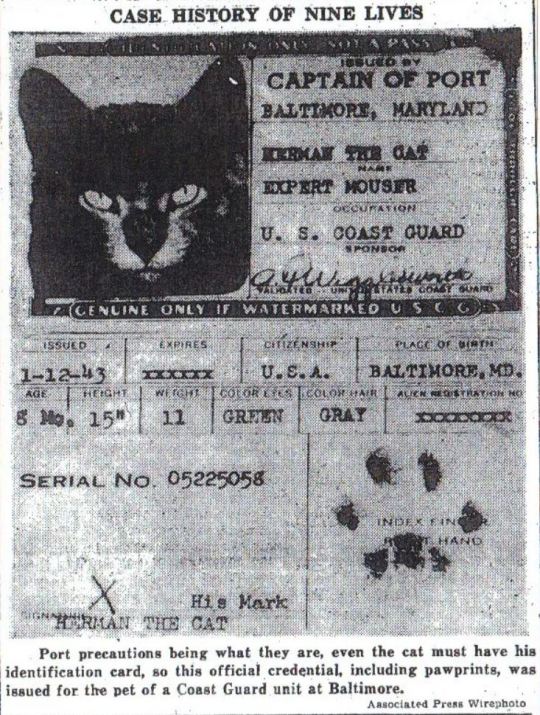
Learn More About Navy Cats: Naval History & Heritage Command, Naval Post
2 notes
·
View notes
Text
On This Day In History
the 13th of August 1988, an obituary that in any other context may not have been worthy of much note was published. After all, what could be so important about a newspaper having no deaths to report?
Well, as it turns out, a lot. You see, the Bay Area Reporter was no normal newspaper, rather a publication that was (and still is) based out of San Francisco for members of the LGBTQ+ community. And this particular article came out over two decades after the beginning of the AIDs epidemic. Thus, this particular article, written by Timothy Rodrigues, was the first in a really long time to not announce the death of yet another victim of the disease, symbolizing hope for a community that had been living in perpetual fear and mourning.
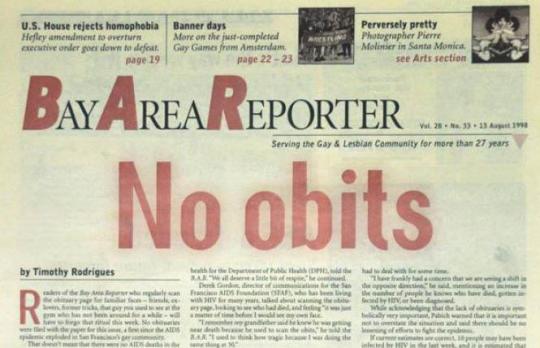
Link to the Article Here
#On This Day In History#LGBTQ+ History#LGBT+ History#Bay Area Reporter#Timothy Rodrigues#AIDs Epidemic#San Francisco History#Obituaries
10 notes
·
View notes
Photo

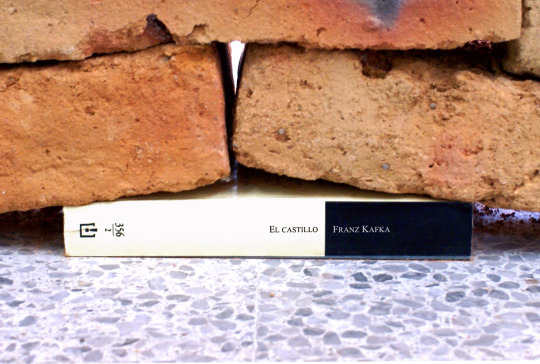

The Castle
by Jorge Méndez Blake
3 notes
·
View notes
Text
Ida B. Wells
Ida B. Wells was one of the more prominent figures in African American, and with good reason. Having been only three years old at the end of the Civil War and having witnessed both the metaphorical and physical scars that slavery left on her parents gave Ida the drive to fight Jim Crow head on. It was also her parents, who ensured that each of their eight children were educated, who gave her the tools by which she would do it.

At the age of 24, after having been fired from her teaching job for criticizing Memphis schools, Wells turned to journalism. Later, at the age of 27, she would become the first female co-owner and editor of a Black newspaper in the United States. Writing articles and editorials under the name Iola, Wells would write about a variety of topics which affected the African American community, most notably lynching and women’s suffrage.
In fact, it was a series of anti-lynching editorials she had written which led to the offices of her newspaper being burned and threats being made against her and her loved ones’ lives. After this incident, Wells moved to Chicago and changed her pen name to “Exiled”.
Learn More: New York Historical Society, National Women’s History Museum, National Park Service, Iowa State University, BlackPast, The Guardian
6 notes
·
View notes
Text
Frida Kahlo
Halfway through Hispanic Heritage Month, it's time to talk about Frida Kahlo. Magdalena Carmen Frida Kahlo y Calderón (1907-1954) was a Mexican painter and a badass. A communist, a disabled, bisexual woman of color, and one of the greatest artists in human history, it's no wonder that Kahlo's work is known around the world.
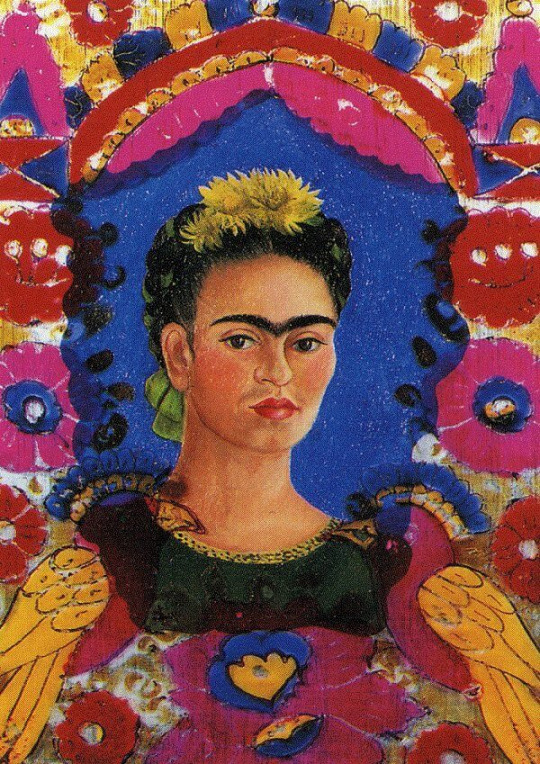
["The Frame" by Frida Kahlo. 1938]
Kahlo was disabled by polio as a child and then was in a bus accident, effectively ending her aspirations to go to medical school (which had very recently opened its doors to women), Kahlo began to paint herself while recovering in bed, sometimes using a harness around her head to help her look at her easel.

["Self-Portrait with Thorn Necklace and Hummingbird" by Frida Kahlo. 1940]
She quickly grew in talent and fame, and traveled international to the United States and Europe to put on exhibitions. She also taught students at the Escuela Nacional de Pintura, Escultura, y Grabado.

["Me and My Parrots" by Frida Kahlo. 1941]
Her paintings death with wellness and disability, politics, self, death, Mexican identity, gender, class, and postcolonialism. Her art style is Surrealist and Magical Realist. She was the first Mexican artist to be featured in the Louvre, and is an icon in Chicano, feminist, and queer history.

["Marxism Will Give Health to the Sick" by Frida Kahlo. 1954]
254 notes
·
View notes
Text
On This Day In History...
on the 20th of October 1960, Anita Ekberg, a Swedish actress and model was being hounded by paparazzi who followed her and the married producer, Guido Giambartolomeo, to multiple nightclubs before following the pair to Ekberg’s private residence.
Felice Quinto, one of the photographers present, claims they were about to leave when Anita Ekberg came back out shoeless but with bow and arrow in hand. Quinto claims that Ekberg then demanded the photos before shooting her arrows, hitting Quinto’s left arm and car. He also accuses Ekberg of kneeing him in the groin after having hit him with her arrow.
Though, it was not all bad for Felice Quinto as he was at least able to sell the photos to tabloids across the world.

Learn More: Vintage Everyday, BBC News
#Anita Ekberg#On This Day in History#October 20th#20th of October#Felice Quinto#Vintage Actress#Old Hollywood#Golden Age of Hollywood
3 notes
·
View notes
Text
“9/11 was a severe tragedy that shook america to the core and was such a devastating event that ruined not only the lives of the 3,000 people who died, but all of their family and friends” and “9/11 isnt an excuse to attack or treat muslims like shit as the majority of those who are muslim believe in non violence and peace and the actions of a few awful people isnt an accurate depiction of a whole community that contains millions of people” are two mindsets that can exist at once.
20K notes
·
View notes
Text
The Olympics Gave Out Medals For Art
No, like, seriously. The Olympics used to give out medals for painting, sculpture, architecture, literature, and music so long as these works were inspired by sports.

These categories unfortunately never achieved the same recognition as the athletic events and were instead treated more like sideshows. Even within the art community, the inclusion of art in the Olympics was not always a popular decision. As a result, the art competitions were abandoned after the 1948 Olympics. But, it’s still interesting to think about what the Olympics would look like today had that not been the case.

Learn More At: International Olympic Committee, The Smithsonian, The Atlantic, Topend Sports
14 notes
·
View notes
Text
ancient greek word of the day: ἀνθοφόρος (anthophoros), bearing flowers, flowery; title of a priestess of Demeter and Kore
4K notes
·
View notes
Text
Lady Kitty Spencer’s Wedding Dresses
Lady Kitty Spencer is both a model and niece of the late Princess Diana Spencer. Therefore, it comes as no surprise that her recent wedding to businessman Michael Lewis gave us some of the most memorable dresses to come out of the British aristocracy.
Throughout the three day long affair, Lady Kitty Spencer dawned a total of six dresses all made by Dolce and Gabbana, an Italian luxury fashion house for which Lady Kitty Spencer is a global ambassador for.

Though the most attention grabbing of the dresses has to be the Victorian inspired wedding dress which seems to draw inspiration from the wedding dress worn by her mother, Victoria Aitken.

See Also: Dolce & Gabbana’s Twitter
18 notes
·
View notes
Text
On This Day In History...
On the 29th of June in 2017, Ana Brnabić became the first female prime minister of Serbia and the first open LGBTQ+ prime minister of Serbia.

Like all other historic events, there was a lot of controversy surrounding this decision as Brnabić’s appointment was subject to much criticism on both ends of the political spectrum. However, the criticism did not end there. That same year, Brnabić caused much outrage during Serbian Pride when she announced that she would not be focusing on LGBTQ+ issues but instead on more important concerns such as inflation and standard of living. This incident was a reason as to why Brnabić was not welcomed to 2018 Pride by many members of the LGBTQ+ community in Serbia.
These controversies have not, however, prevented Prime Minister Ana Brnabić from being appointed for a second term.
Learn More About Ana Brnabić: New York Times, Deutsche Welle, BBC
Learn More About LGBTQ+ Issues In Serbia: EuroNews, Pink News, Culture Trip
#On This Day in History#July 29th#29th of July#Ana Brnabić#LGBTQ+ History#LGBT History#Happy Pride Month#Pride Month#Women's History#Women In Power#Serbia#Serbian History
13 notes
·
View notes
Photo


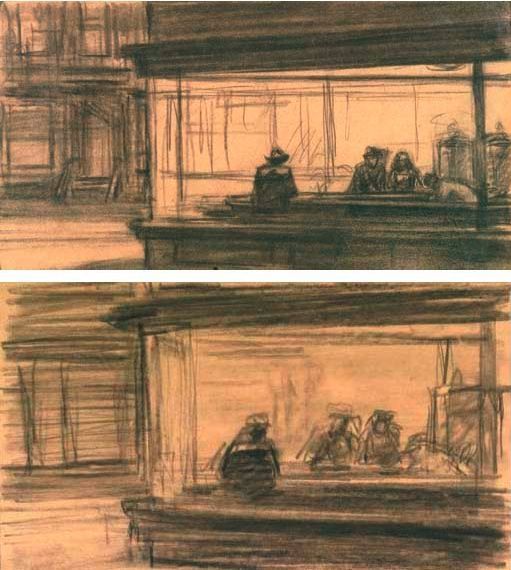

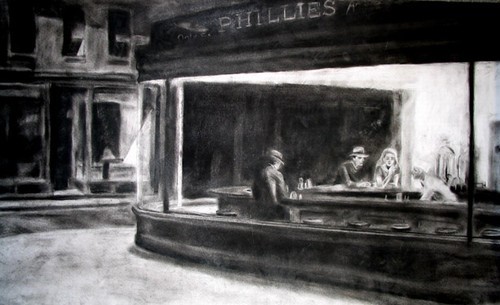

Edward Hopper, Sketches and preliminaries for Nighthawks, 1942
54K notes
·
View notes
Text
Henry Gerber
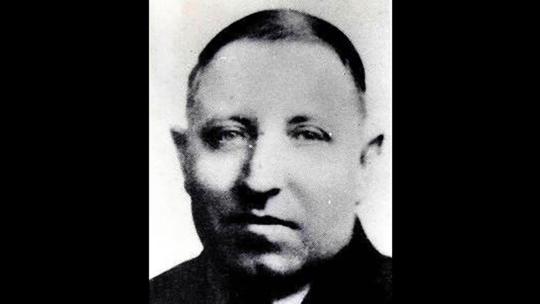
Henry Gerber was a German immigrant who served in the United States military during the early 1920s. It was during this time which Gerber was stationed in Germany and experienced some of the homosexual emancipation movement which was occurring in Germany at the time.
Soon after returning from duty, Gerber felt the need for some sort of organization dedicated to the protection of gay rights in the United States and thus created the first gay rights organization in American history, The Society for Human Rights (SHR). Unfortunately, this organization disbanded after 7 months when members were raided by police and Gerber arrested. While Gerber’s case was thrown out due to being arrested without a warrant, Gerber was still fired from his job as a postal worker and ended up reenlisting in the military.
Gerber retired after World War II and eventually died on the 31st of December in 1972. However, he never stopped supporting gay rights organizations no matter how discreetly he went about it.
Learn More: Gerber/Hart Library and Archives, Legacy Project Chicago, National Park Service
4 notes
·
View notes
Text
On This Day In History...
On the 28th of April 1442, King Edward IV of England was born in Rouen, Normandy to the House of Plantagenet.

As a descendant of Edward III, Edward IV’s father claimed a right to the English throne after the reigning king’s mental decline. Thus beginning the War of the Roses.
Edward IV’s father did, however, die during the war and Edward IV to take up his position. This led Edward IV to win the throne of England, be overthrown, and then retake the throne once more.
His death in 1483 at the age of 40 was just as tumultuous as his reign as both his sons and heirs went missing, leading to the reign of his brother, Richard III.
Learn More: Royal UK, Historic UK
#Edward IV#War of the Roses#On This Day In History#plantagenet#House of York#Elizabeth Woodville#Richard III#princes in the tower#28th of April#April 28#April 28th#White Rose
13 notes
·
View notes